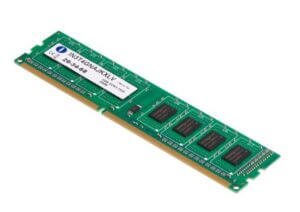A late posting for M today for the #IncreaseVSChallenge. M is for Mother’s Day, a day that varies depending on where you are in the world. It’s also for memory, something I don’t seem to have much of these days! 🤣
M is also for MRI, something I’m finally getting tomorrow!

Mother's Day
It is recorded that ancient Greeks practised Mother’s Day but in most of Europe with the coming of Christianity, Mother’s Day was officially the fourth Sunday of Lent. This year was 14th March.
However, when the puritans sailed to America they didn’t bring the festivals with them.
It was Julia Ward Howe, an abolitionist and suffragette in 1870 who wrote the “Mother’s Day Proclamation” which was a call to action to unite mothers to promote world peace and campaigned for a “Mother’s Peace Day” to be held every 2nd June.
In the 1900’s Anna Jarvis, whose mother died in 1905 wanted a day to honour the sacrifices mothers make for their children. In 1908, she sought financial backing from John Wanamaker, the owner of a chain of Philadelphia department stores to organise the first Mother’s Day in a Methodist church in Galston, West Virginia. That same day, thousands of people attended the Mother’s Day celebration in John Wanamaker’s stores in Philadelphia.
Anna Jarvis argued that the festivals at the time were for male achievements and started a massive writing campaign to newspapers and prominent politicians.
By 1912, many towns and cities celebrated Mother’s Day as an annual holiday and in 1914, President Woodrow Wilson signed a measure making Mother’s Day as officially held on the second Sunday of May.
Other countries have different dates for their Mother’s Day, with Norway being the earliest on 14th February and Indonesia being the latest on 22nd December.

Memory
Computer memory works a bit like a switch. When the computer wants to read the state of this switch, it looks at that area of memory and that state is returned. When the computer wants to change the state of that switch, it applies power to a pin and that sets the state.
This is the case for RAM or Random Access Memory, and modern memory has a refresh circuit that keeps the state of the memory active. When power fails, there is no refresh so the content of RAM falls into an indeterminate state. RAM is fast but relatively expensive compared to storage, which is why you see huge storage devices and smaller quantities of RAM. The operating system will take backgrounded and stopped programs out of memory and store them to storage to free up space for other programs.
In the case ROM or Read Only Memory, the pin is used to program the state before it is inserted into the computer, and in most cases the computer cannot access that pin to reprogram it in normal operation. A good example is the BIOS (Basic Input Output System) or in modern PCs, UEFI (Unified Extensible Firmware Interface) chip that runs a small program at all times to provide the computer with the correct time and tell it where to load the operating system from.
Flash memory works a bit like ROM and RAM combined. When the computer accesses flash memory, it can read and write to it like normal, but when power is turned off or the memory is ejected, it remains in the current state until it is accessed later. Often this is used as storage because it is a lot slower to use than RAM. However, in operating systems like Windows 10, the flash memory can be used as faster swap area than writing to a hard drive.
It is generally a good idea to have as much memory as you can afford in your computer. This is because programmers tend to write programs that have sloppy access to memory and memory leaks are commonplace (where a program tells the computer it wants a certain size but then uses more.)
Apple have switched to using a much more complicated system called referenced memory, where programs only get what they ask for. It makes programming harder but also makes for a more efficient memory management.
When purchasing memory, look for known brands and pay a bit more for it, because these will have passed higher quality tests and are less likely to fail.

MRI
MRI or Magnetic Resonance Imaging uses a powerful magnet to bring protons into equilibrium in the patient’s body. 4 coils influence the behaviour of these protons to bring them to the MRI sensors. The speed at which these protons collide with the sensors records the intensity of the result.
Patients are often given a contrast that makes this proton movement easier.
Unlike a CT machine, which is a revolving X-ray machine that bombards the body with X-rays that pass through the body at different rates to record different intensities to the sensors, which makes them more suited for bones and blood vessels; MRI is better at showing contrast and details of soft tissue like the brain, muscles, tendons, ligaments, nerves, and spinal cord.
The next generation MRI machines are open instead of being a tube which aids with claustrophobia, a common problem with the tube type MRI machines, but they can’t stop the intense banging sounds because they are a feature of the magnetic coils.
They aren’t looking for my brain this time around, I had a nasty car accident returning from a customer in Newenden in December 2017 and need to find out what is going on in my back and spine.


